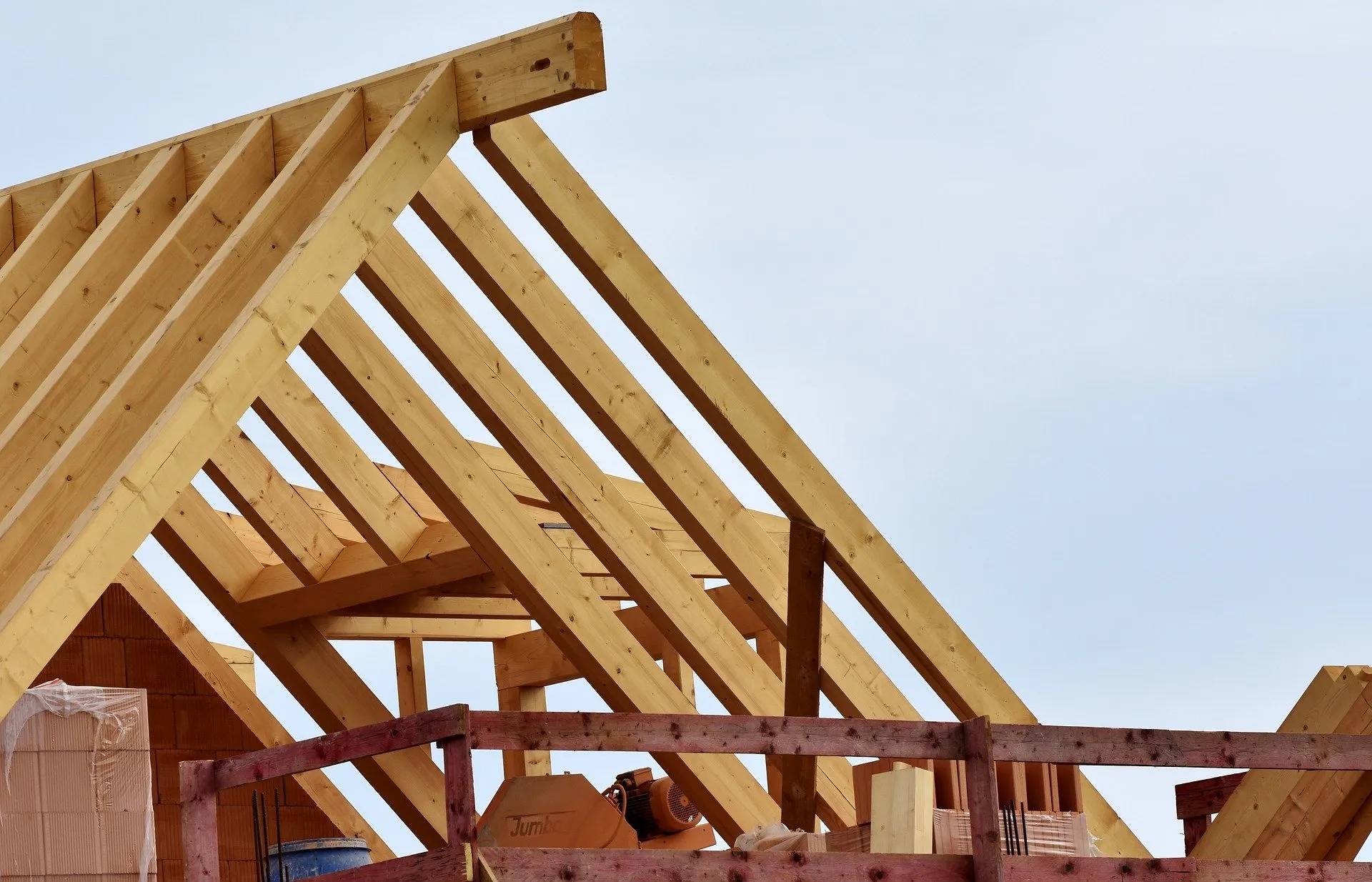Lead Work Tate & Sons Roofing Nottingham
Looking For Quality Local Roofers?
Then You Have Landed at the Right Place!
We are Professional Roof Contractors that Operate around Nottingham and Surrounding Local Towns and Villages.
Call Us Now for a Free Quote & Friendly Advice.
Get In Touch
Lead Work
Roofing Lead Work Specialist
Having a lead roof is a great way to protect your home from the elements. Lead is a very durable material that can last for many years, making it an ideal choice for roofing. However, installing a lead roof can be a challenging project. That’s why it’s important to find a roofing lead work specialist who has the experience and expertise to get the job done right.
Tate & Sons Roofing Nottingham, we have been providing roofing lead work specialist services for over 20 years. We are experts in all aspects of lead roof installation, including flashings, valleys, and gutters. We also offer a wide range of lead products to choose from, so you can find the perfect solution for your home.
If you’re looking for a roofing lead work specialist in the Nottingham area, contact us today. We would be happy to provide you with a free consultation and estimate for your intended work.
Lead Flashing
Lead flashing is a type of roofing material that is used to seal the edges of roofs and prevent water damage. Lead flashing is installed around roof protrusions, such as chimneys and skylights, and at the intersection of two different types of roofing materials. Lead flashing is available in rolls or pre-formed sections and is cut to fit the specific application. Installation of lead flashing requires special tools and techniques, so it is best to hire a professional roofing contractor to perform the work.
The first step in lead flashing installation is to measure the area where the lead will be installed. Next, strips of lead are cut to size and then bent into shape. The lead is then placed onto the roof and fastened down with nails or screws. Finally, a sealant is applied to the lead in order to keep it from coming loose.
Lead flashing can last for many years if it is properly installed and maintained. However, it is important to check the lead regularly for signs of wear and tear. If any damage is found, it should be repaired immediately in order to prevent further damage to the roof.
Lead flashing is an effective way to protect your home from water damage. However, it is important to make sure that the lead is installed properly in order to ensure its efficacy. If you have any questions about lead flashing installation, be sure to consult a professional.
If you’re looking for a way to protect your home from water damage, lead flashing is a great option. Lead flashing is a material that is used to seal the joints between different pieces of masonry, such as bricks or stones. It’s also often used around windows and doors.
Lead flashing is an effective way to prevent water from seeping into your home, which can cause serious damage. Lead is a very strong metal, so it can resist a lot of force. This makes it an ideal material for use in areas where there is potential for water damage.
In addition to its strength, lead is also very flexible. This means that it can conform to the shape of the joint it’s being installed in, creating a tight seal. Lead flashing is also easy to work with, so it’s a good option for do-it-yourselfers.
If you’re thinking about installing lead flashing, there are a few things you should keep in mind. First, lead is a poisonous metal, so it’s important to take precautions when handling it. Second, lead can be difficult to cut, so you’ll need to use special tools or hire a professional if you’re not experienced in working with this material.
Overall, lead flashing is an excellent choice for sealing joints and preventing water damage. It’s strong, flexible, and easy to work with, making it a great option for both professionals and DIYers.
How Long Should Lead Flashing Last?
Lead flashing is one of the most durable and longest lasting roofing materials available, but it still has a finite lifespan. Depending on the quality of the lead and the weather conditions in your area, lead flashing can last anywhere from 20 to 50 years. Even with proper maintenance, however, lead flashing will eventually need to be replaced. If you live in an area with particularly harsh weather conditions, it’s a good idea to have your lead flashing inspected every 5 to 10 years to ensure that it’s still in good condition. If you notice any cracks or damage, it’s best to have the lead replaced as soon as possible to avoid further damage to your roof.
Lead Valley
What is a lead valley
Roofing lead valleys are a type of flashing that helps to prevent water from seeping into the home through the roof. Lead valleys are installed at the junction of the roof and the gutter, and they help to direct water away from the home. Lead valley installation is not a difficult process, but it is important to follow the steps carefully in order to ensure a proper seal.
1. Begin by removing any old lead valley material that may be present on the roof. This can be done with a putty knife or a similar tool. Be sure to remove all of the old material, as this will ensure a good bond for the new lead valley.
2. Next, use a measuring tape to measure the length of the lead valley that you will need. Cut the lead valley to size, using a hacksaw or a similar tool.
3. Once the lead valley is cut to size, apply a generous amount of roofing sealant to one side of the strip.
4. Carefully place the lead valley into position on the roof, making sure that it is lined up properly with the gutter. Use a hammer or a screwdriver to lightly tap the lead valley into place.
5. Apply additional roofing sealant to the top and bottom edges of the lead valley. This will help to create a watertight seal.
6. Allow the sealant to dry completely before allowing any water to come into contact with the area.

Lead valleys are an important part of any roofing system, and proper installation is essential to ensure that they function properly. With a little care and attention, you can install a lead valley on your own roof in no time at all.
If you are not confident on a roof and would like Tate & Sons Roofing Nottingham to Install the lead valley on your roof, then give us a call, we will be happy to come over to your home or business premise to offer advice, together with an affordable quotation for your lead work.
Can A Lead Roof Be Repaired?
Yes, in most cases lead roofs can be repaired. However, depending on the extent of the damage, it may be necessary to replace some or all of the lead sheets. Lead roofs are typically very durable and can last for many years with proper maintenance. However, if they are not properly maintained, they can develop leaks and other problems. If you notice any leaks or other damage to your lead roof, it is important to have it repaired as soon as possible to prevent further damage.
Lead work Services that we offer:
- Pitched Roof Coverings
- Flat Roof Coverings
- Parapet Linings
- Valley Gutters
- Rainwater Goods – Downpipes – Hoppers – Brackets
- Lead Flashings – Lead Valleys – Lead Gulleys
- Chimney Aprons – Chimney Backs – Soakers
- Bay Window Coverings – Dormer Coverings
Finding the right lead work specialist in Nottingham
If you’re looking for lead roofing installers in your area, there are a few things you should keep in mind. First, lead roofing is a specialised type of roofing that requires specific training and experience to install properly. Make sure any potential contractor you’re considering has both the training and experience necessary to install your lead roof correctly.
Second, because lead roofing is such a specialised type of roofing, it’s important to find an installer who is familiar with the products and materials used in its installation. Lead roofs are made from different materials than traditional asphalt shingle roofs, so an experienced installer will know how to work with these materials to ensure a proper installation.
Finally, be sure to ask for references from any potential lead roofing installer. Any reputable contractor will be able to provide you with a list of satisfied customers who can attest to their quality of work.
By following these tips, you can be sure to find a qualified and experienced lead roofing installer who can provide you with the high-quality roof you need.
Is lead good for a flat roof?

Yes, lead is good for a flat roof because it provides an effective barrier against water and other elements. Lead is also durable and easy to work with, making it an ideal material for a flat roof. If you are planning to install a lead roof on your home, be sure to hire a professional contractor who has experience installing this type of roof.
If you’re considering lead for your flat roof, there are a few things to keep in mind. First, lead is a bit more expensive than other materials like asphalt or rubber. Second, lead can be heavy, so you’ll need to make sure your roof is strong enough to support the weight.
Overall, lead is a great choice for a flat roof. It’s durable, fire resistant, and easy to install. If you’re willing to pay a bit more for the material, lead can give you peace of mind knowing that your roof will be well-protected.
What are the types of lead flashing?
There are three main types of lead flashing: rolled, code 5, and soldered. Rolled lead flashing is the most common type used in residential applications. It is made by rolling a sheet of lead into a tube shape and then folding it over the edge of the roof. Code 5 lead flashing is typically used in commercial applications. It is made by welding a strip of lead to another strip of lead at a 90-degree angle. Soldered lead flashing is made by soldering two pieces of lead together.
There are a few other types of lead flashing that are less common but still used in some applications. These include pre-formed lead flashing, which is made by moulding lead into a specific shape; and seamed lead flashing, which is made by joining two pieces of lead together with a seam.
There are four main types of lead flashing:
1. Rolls or sheets
2. Lead strips
3. Pre-formed lead flashing
4. Lead soakers
Lead rolls and sheets are the most common type of lead flashing and are suitable for a wide range of applications. Lead strips are ideal for use on roof edges, valleys, and gables, while preformed lead flashing is perfect for use around chimneys, skylights, and other complex areas. Lead soakers are used to protect vulnerable areas such as roof eaves and gable ends.
If you’re not sure which type of lead flashing is right for your project, please contact us and we’ll be happy to advise.
What do roofers use instead of lead?
There are a few different materials that roofers can use instead of lead, depending on the specific needs of the project. Some common options include copper, zinc, and aluminium. Each of these materials has its own benefits and drawbacks, so it’s important to choose the one that will best fit the needs of your particular project.
Copper is a popular choice for many roofing projects because it is an excellent conductor of heat and electricity. It is also very durable and resistant to corrosion. However, copper can be quite expensive, so it may not be the best option for all budgets.
Zinc is another good option for roofing projects. It is less expensive than copper and has many of the same benefits, including being an excellent conductor of heat and electricity. However, zinc is not as durable as copper and is more susceptible to corrosion.
Aluminium is the least expensive of the three options, but it is also the most lightweight. It has good conductivity properties and is resistant to corrosion, but it is not as strong or durable as either copper or zinc.
When choosing a material for your roofing project, it’s important to consider all of the factors involved in order to make the best decision for your home or business. If you have any questions, be sure to ask our professional roofers for advice.
So now you know who to contact if you require any roof tiling on your home, business or commercial property.
Call Tate & Sons Roofing Nottingham.
Free Consultation and Free Quotation.
